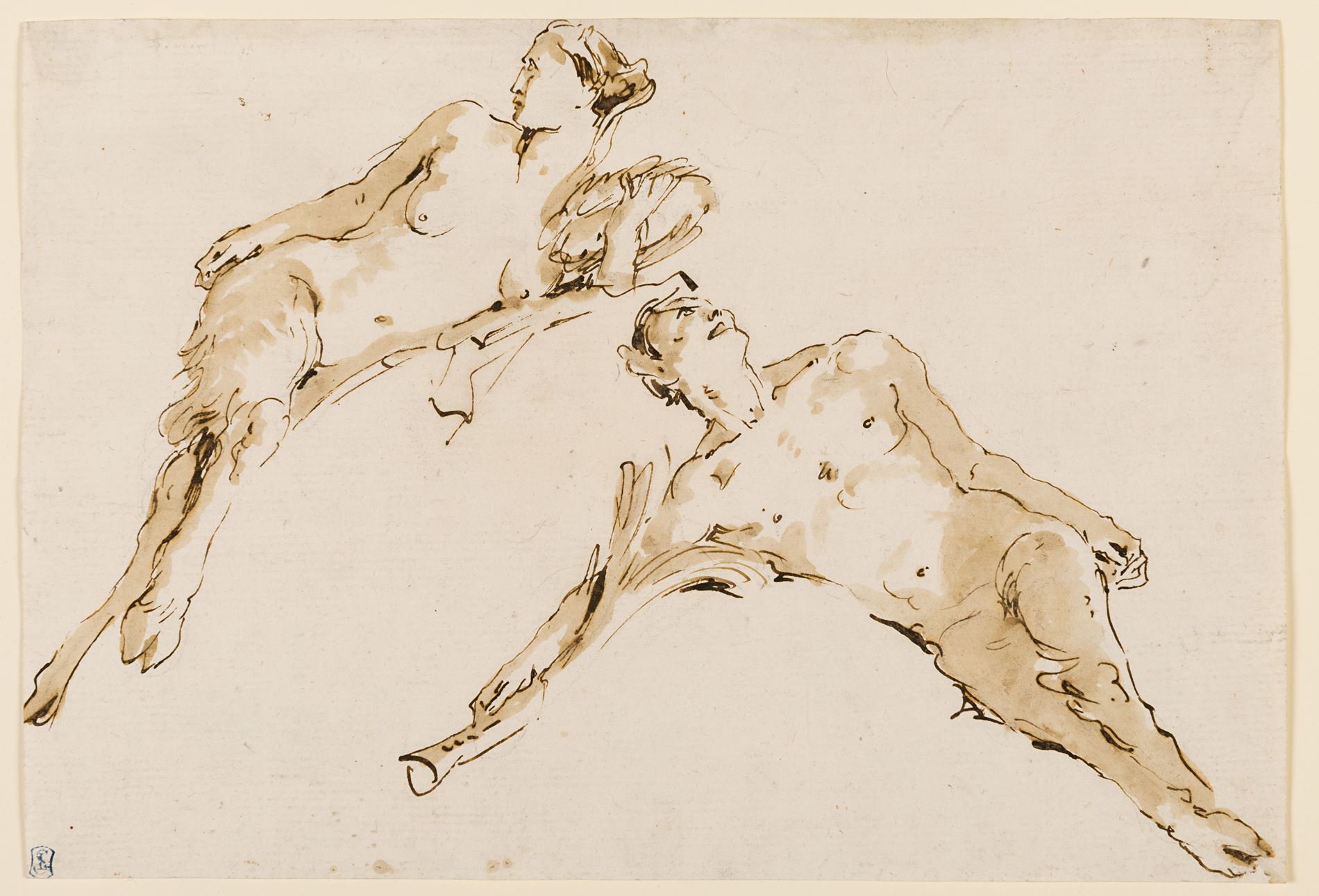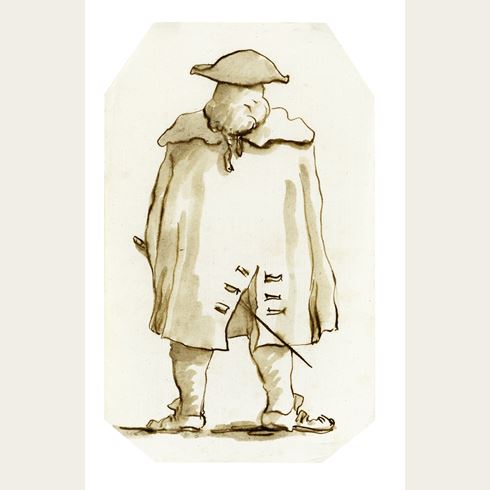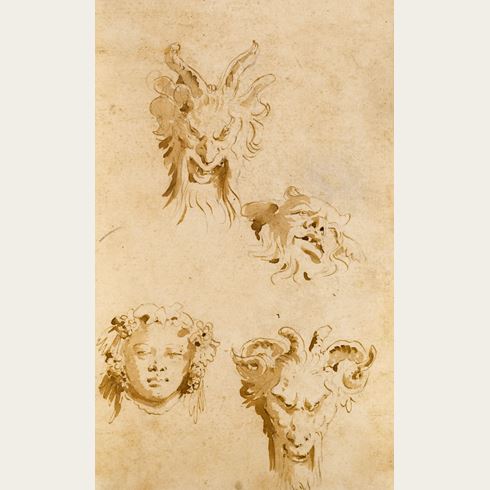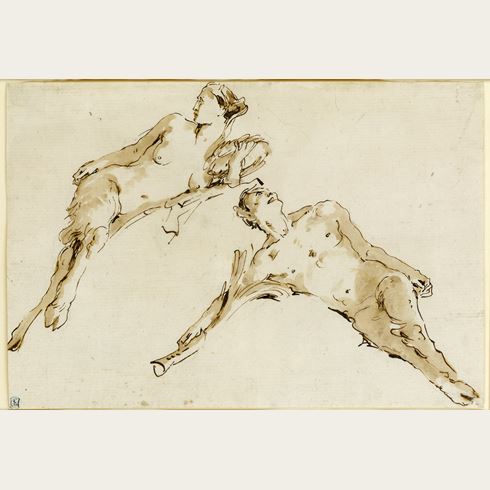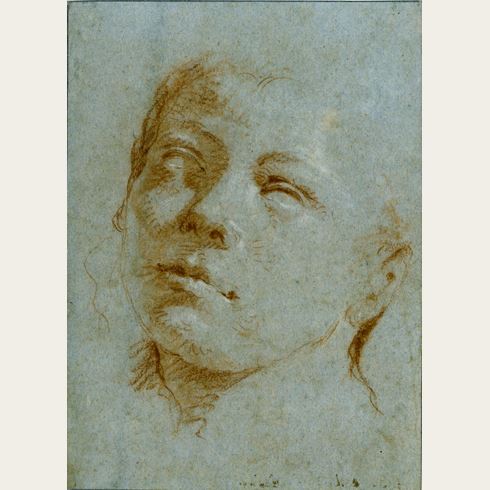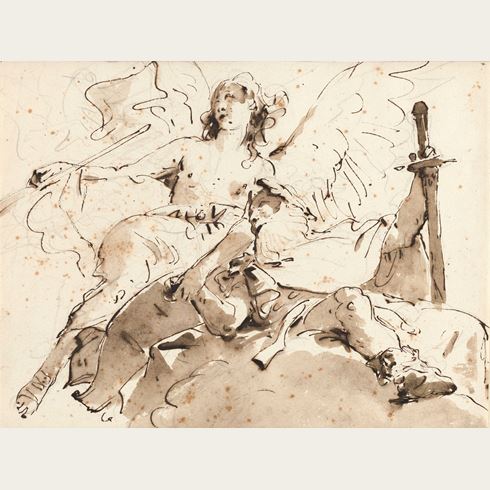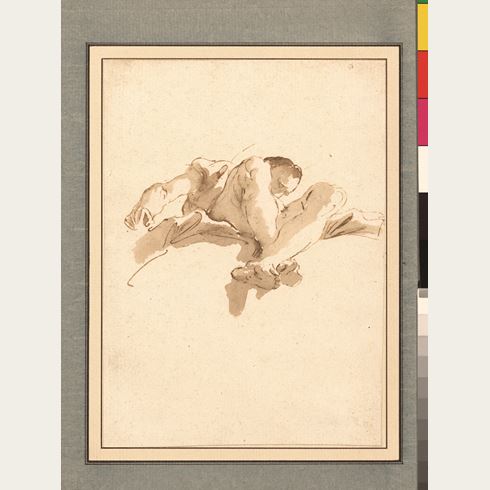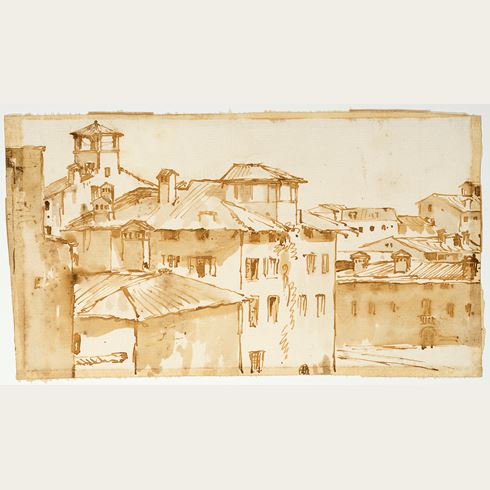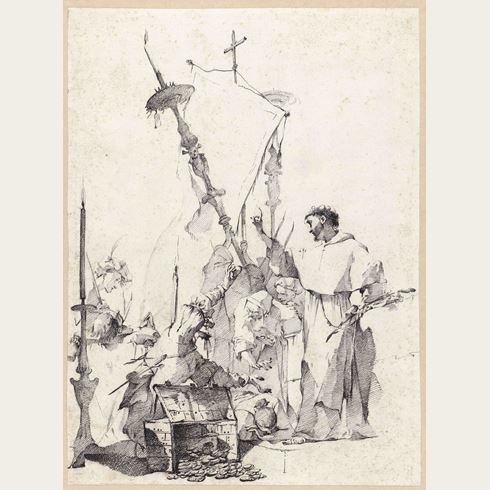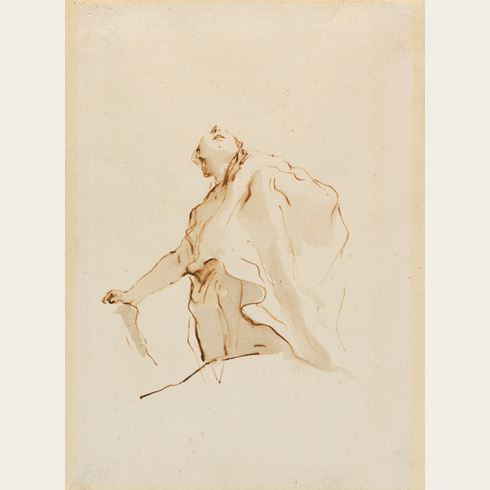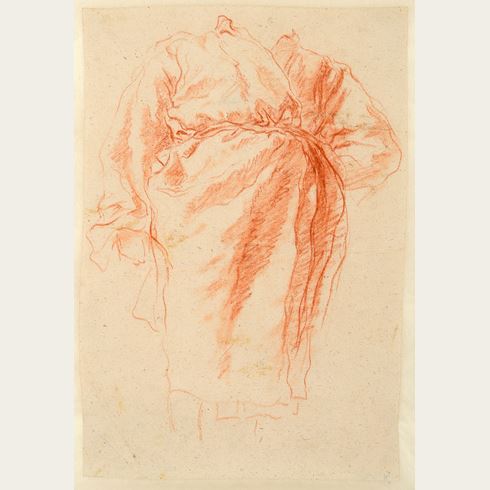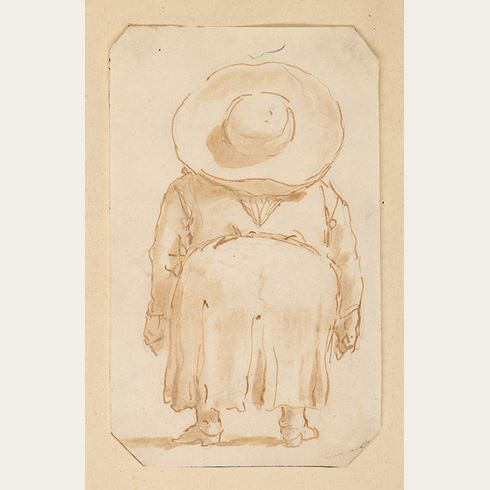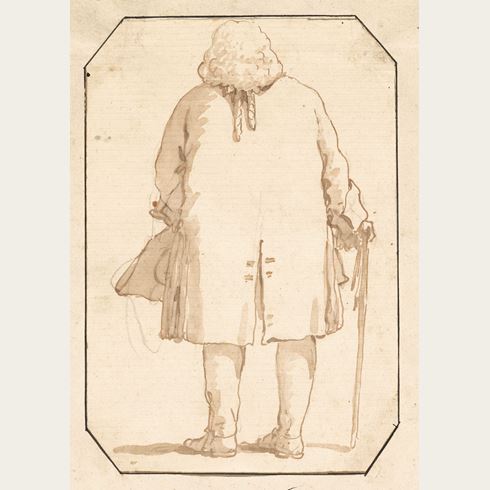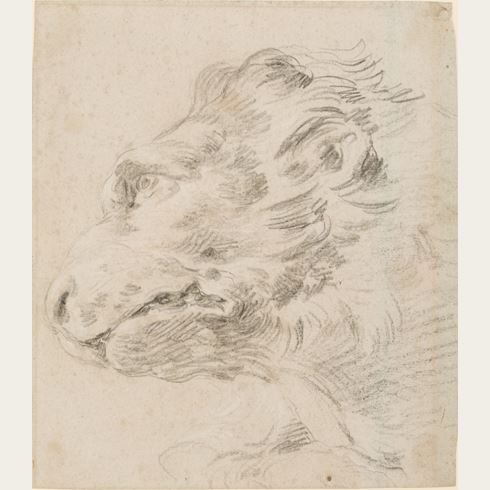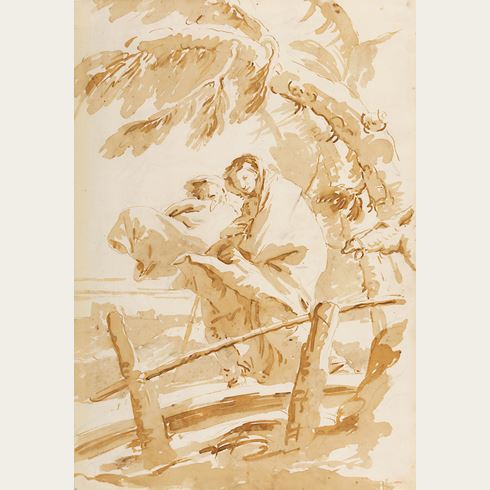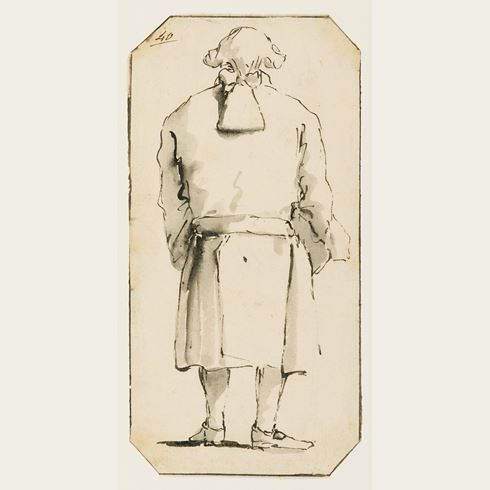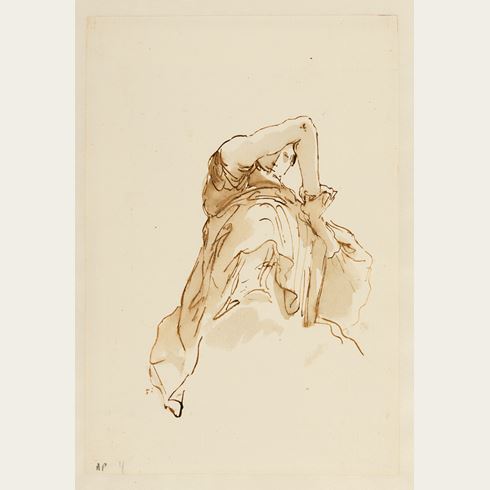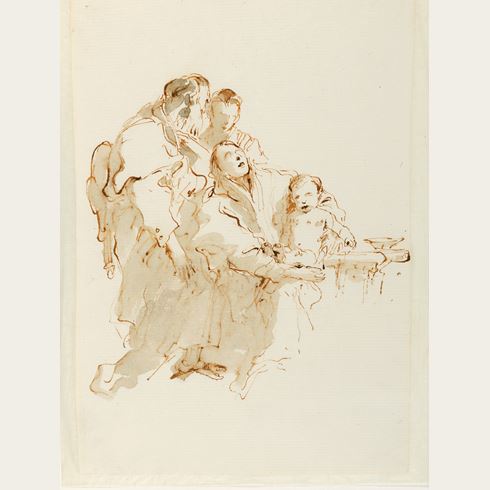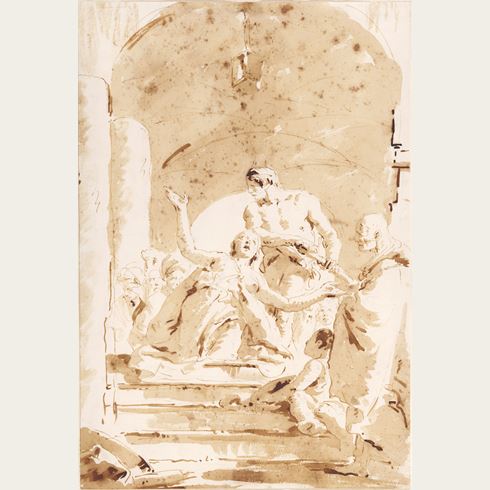Giovanni Battista TIEPOLO
(Venice 1696 - Madrid 1770)
A Reclining Satyr and Satyress
182 x 266 mm. (7 1/8 x 10 1/2 in.)
A group of fifteen pen and wash drawings of satyrs by Giambattista Tiepolo are in the collection of the Museo Horne in Florence; these include several studies of paired satyrs as depicted in the present sheet. Other drawings of satyrs by Tiepolo are today in the Metropolitan Museum of Art in New York, the Ecole des Beaux-Arts in Paris, the Pierpont Morgan Library in New York, the Fogg Art Museum in Cambridge, MA, and elsewhere. These drawings of satyrs were all part of the repertory of motifs that the artist began to assemble in the 1740s, both for the Palazzo Clerici frescoes and for future projects. Indeed, some of the satyrs in these drawings of the 1740s reappear in such later works as the decoration of the Ca’ Rezzonico in Venice, executed in 1756-1757, and the Villa Pisani at Strà, painted between 1760 and 1762.
The present sheet bears the collector’s mark of Louis-Auguste, Baron de Schwiter (1805-1889), who was among the first 19th century collectors to focus his interests on assembling a group of French and Italian drawings of the previous century. De Schwiter owned several drawings by Tiepolo, including a similar pen and wash study of a paired male and female satyr; formerly in the de Boer collection in Amsterdam, it was sold at auction in London in 1995.
Such drawings as the present sheet highlight the charm and grace of Tiepolo’s inventive draughtsmanship, and underline its longstanding appeal among collectors and connoisseurs. As Aikema writes, ‘For many, the name Tiepolo is synonymous with virtuoso pen-and-wash drawings of figures who fly through the air, perch on fantastic architecture, or haunt imaginary landscapes. These drawings, which are among the high points of the artist’s oeuvre, have survived in great numbers. From the mid-1730s onward, hundreds of them issued form the artist’s pen, each more beautiful than the last.’
The leading painter in Venice for much of his career, Giambattista Tiepolo was also undoubtedly one of the finest Italian draughtsmen of the 18th century. That his drawings were greatly admired in his lifetime is confirmed by contemporary accounts; indeed, as early as 1732 the writer Vincenzo da Canal remarked that ‘engravers and copyists are eager to copy his works, to glean his inventions and extraordinary ideas; his drawings are already so highly esteemed that books of them are sent to the most distant countries’. From the late 1730’s until his departure for Spain in 1762, Tiepolo enjoyed his most productive period as a draughtsman, creating a large number of vibrant pen and wash studies that are among the archetypal drawings of the Venetian Settecento. As one recent scholar has commented, ‘From the start of his career [Tiepolo] had enjoyed drawing as an additional means of expression, with equally original results. He did not draw simply to make an immediate note of his ideas, nor to make an initial sketch for a painting or to study details; he drew to give the freest, most complete expression to his genius. His drawings can be considered as an autonomous artistic genre; they constitute an enormous part of his work, giving expression to a quite extraordinary excursion of the imagination; in this respect, Tiepolo’s graphic work can be compared only with that of Rembrandt.’
Tiepolo’s drawings include compositional studies for paintings and prints, drawings of heads, figure studies for large-scale decorations, landscapes and caricatures, as well as several series of drawings on such themes as the Holy Family. Many of these drawings were bound into albums by theme or subject, and retained by the artist in his studio as a stock of motifs and ideas for use in his own work, or that of his sons and assistants.
Provenance
Possibly his sale, Paris, Hôtel Drouot [Chevallier], 20-21 April 1883, lot 136 (‘Faunes. Figures décoratives pour des voussures. Plume et sepia.’)
Paul Prouté, Paris, in 2003
Flavia Ormond, London, until 2006
Stephen Ongpin Fine Art, London, in 2009
Susan Lyall, Swinbrook, Oxfordshire and Little Cassiobury, Bedford Hills, New York.
Literature

